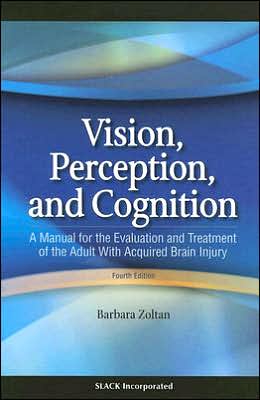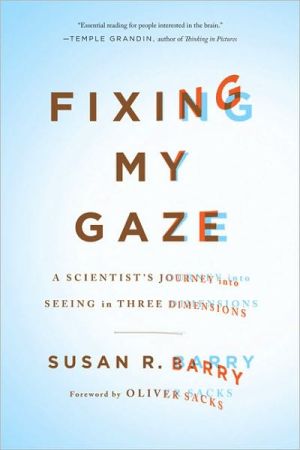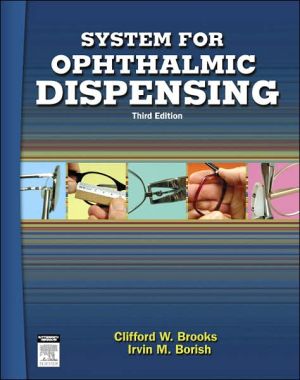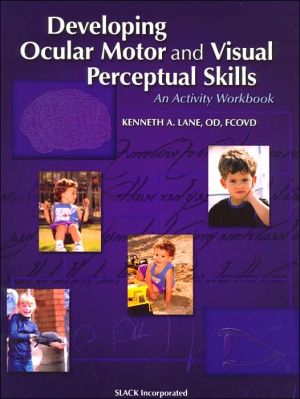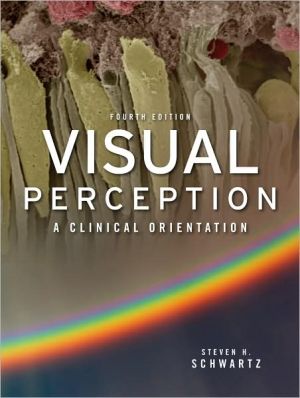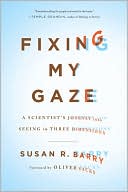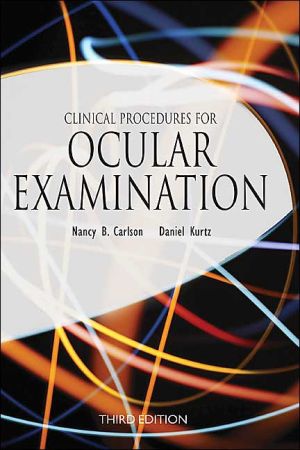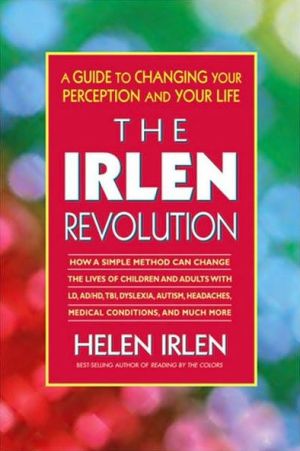Vision, Perception, and Cognition: A Manual for the Evaluation and Treatment of the Adult with Acquired Brain Injury
Vision Perception and Cognition, Fourth Edition is a concisely structured text that expertly addresses clinical reasoning and decision making for the entire evaluation and treatment process of the adult with acquired brain injury. Provided are theoretical information, guidelines for both static and dynamic assessment, information on specific standardized evaluations, guidelines for adaptive and restorative treatment based on described theoretical and evidence-based information, and...
Search in google:
Vision Perception and Cognition, Fourth Edition is a concisely structured text that expertly addresses clinical reasoning and decision making for the entire evaluation and treatment process of the adult with acquired brain injury. Provided are theoretical information, guidelines for both static and dynamic assessment, information on specific standardized evaluations, guidelines for adaptive and restorative treatment based on described theoretical and evidence-based information, and information on environmental impact of client performance. Inside this best-selling book, Barbara Zoltan, MA, OTR/L addresses visual, perceptual, and cognitive evaluation and treatment, providing structure, clarity, and content suitable for both students and experienced clinicians. Updated and expanded to reflect current practice and relevant research, Vision, Perception, and Cognition, Fourth Edition is a unique resource that takes the reader from theory to practice in a practical and detailed way. Students and clinicians will benefit from the numerous tables, figures, and extensive references presented throughout the text, as well as the inclusion of a glossary, for easy reference to terminology used throughout Vision, Perception, and Cognition, Fourth Edition. Faculty will be impressed by the addition of an on-line instructor’s manual for additional classroom learning objectives and activities. Component areas covered include: • Primary visual skills • Apraxia and agnosia • Visual discrimination skills • Orientation • Attention • Memory • Self-awareness and monitoring • Planning and organization • Problem solving and decision making • Categorization • Mental flexibility • Abstraction • Generalization and transfer • Acalculia New topics addressed in this Fourth Edition: • Constraint-induced therapy • Brain plasticity/Functional reorganization • Neuroimaging • Specific occupation-based models and evaluations • Contextual influence on client performance • Client-centered practice • Client learning capacity • Clinical reasoning • Interviewing • Standardization • Visual vestibular processing • Pupillary response • Contrast sensitivity Whether you are a student or clinician in the area of occupational therapy, physical therapy, neuropsychology, optometry, or speech pathology, Vision, Perception, and Cognition: A Manual for the Evaluation and Treatment of the Adult with Acquired Brain Injury, Fourth Edition will continue to be an invaluable resource for exploring theory and practice in the evaluation and treatment processes. Doody Review Services Reviewer:Elliot J Roth, MD(Rehabilitation Institute of Chicago)Description:This book focuses on visual, perceptual, and cognitive deficits in patients with stroke, traumatic brain injury, and other forms of acquired cerebral dysfunction. Individual chapters cover each of the specific visual, perceptual, and cognitive functions. This is an update of the 1996 edition.Purpose:It is intended as a resource for clinicians and students to facilitate the application of specific evaluation and treatment techniques for patients with acquired brain injury, and to provide the theoretical and evidence-based support for using these methods. These are important objectives for clinicians, and author meets them.Audience:The audience includes practitioners and students in occupational therapy, physical therapy, speech-language pathology, neuropsychology, optometry, as well as other rehabilitation professionals.Features:Following relatively brief overviews of theoretical frameworks and issues related to the evaluation and treatment of patients with acquired brain injury, detailed chapters cover each of the major cognitive and perceptual deficits. The strength of the book lies in the chapters relating to cognitive-perceptual functions, most of which provide sufficient (but not overwhelming) background material on the function, highly detailed descriptions of evaluation methods, and moderately thorough reviews of treatment interventions. The best discussions relate to evaluation and assessment measures, each of which is a highly detailed set of guidelines that clinicians can readily follow in their patient care activities. In each chapter, the review of treatment stands out visually. References are numerous and thorough. The final two chapters, on factors influencing visual, perceptual, and cognitive functions and on computer technology aids, are not as thorough, complete, or helpful as the rest of the chapters.Assessment:This is a useful book for practicing clinicians and students in rehabilitation therapy disciplines, providing the appropriate theoretical and scientific support for certain clinical activities, but mostly providing extensive, detailed, and easy-to-follow guidelines on clinical assessment techniques for patients with cognitive, perceptual, and visual dysfunction. There are several new clinical techniques discussed in this edition that were not included in prior version.
Contents Dedication Acknowledgments About the Author Foreword Preface Chapter 1: Theoretical and Additional Factors Guiding Evaluation and Treatment Section I: Theoretical Basis Theory as a Basis for Evaluation and Treatment Frames of Reference Utilizing a Restorative Conceptual Base: Bottom-Up Approaches Frames of Reference Utilizing an Adaptive Conceptual Base: Top-Down Approaches Section II: Additional Factors Guiding Evaluation and Treatment Client-Centered Practice Client and Family Education The Client's Learning Capacity and Its Influence on Performance Evidence-Based Practice Clinical Reasoning Chapter 2: General Evaluation Issues Top-Down and Bottom-Up Assessments Occupation-Based Evaluations Quantitative (Static) Assessment Qualitative Assessment Clinical Observation Interviewing Dynamic Assessment Test Reliability Test Validity Standardization Test Scoring Administration of Tests Evaluation Choice Chapter 3: Visual Processing Skills Modified Information Processing Theory Warren's Hierarchal Model of Visual Processing Evaluation and Treatment of Visual Skills General Guidelines for Visual Processing Skills Evaluation Pupillary Response Visual Acuity Contrast Sensitivity Ocular Alignment Visual Fields Oculomotor Control Visual Fixation Saccadic Eye Movements Smooth Pursuit Eye Movements Organized Scanning Convergence and Accommodation Diplopia Visual Inattention Visual/Vestibular Processing Chapter 4: Apraxia Ideomotor Apraxia Ideational Apraxia Limb-Kinetic Apraxia Oral Apraxia Constructional Apraxia Dressing Apraxia Chapter 5: Body Scheme Disorders Body Scheme Autotopagnosia Unilateral Body Neglect Anosognosia Right-Left Discrimination Finger Agnosia Chapter 6: Visual Discrimination Skills Form Discrimination Depth Perception (Stereopsis) Figure-Ground Perception Spatial Relations Topographical Disorientation Additional Test Batteries of Visual Discrimination/Perception Chapter 7: Agnosia Visual Agnosia Visual Object Agnosia Prosopagnosia Simultagnosia Color Agnosia Metamorphopsia Visual-Spatial Agnosia Topographagnosia Environmental Agnosia Tactile Agnosia Auditory Agnosia Apractognosia Agnosias Related to Body-Scheme Disorders Chapter 8: Orientation and Attention Orientation Attention Chapter 9: Memory Sensory, Perceptual, and Working Memory Implicit and Explicit Memory Declarative and Nondeclarative (Procedural) Memory Prospective Memory Semantic and Episodic Memory Long-Term Memory Chapter 10: Executive Function Executive Function Section I: Evaluation and Treatment of Self-Awareness and Monitoring Section II: Evaluation and Treatment of Executive Function Initiation Planning and Organization Problem Solving Decision Making Categorization Mental Flexibility Abstraction Generalization and Transfer Section III: Occupation-Based Evaluations of Executive Function Chapter 11: Acalculia Acalculia Chapter 12: Factors That Influence the Client's Vision, Perception, and Cognition The Relationship of Age to Visual, Perceptual, and Cognitive Evaluation and Treatment Sleep Disorders Motivation Depression Behavior and Personality Changes Additional Factors Affecting Performance Chapter 13: The Use of Computers and Computerized Technology in Visual Perceptual, and Cognitive Retraining Computers Computerized Technology Appendix A: Common Statistical Terms and Analyses Used in Clinical Research Studies Appendix B: Evaluation Index Appendix C: Glossary of Terms Index
\ From the Publisher“This is a very well researched and referenced text that effectively integrates the author’s many years of experience with research evidence. It provides the student and practicing clinician with many helpful resources, including specific standardized assessments, occupationally based assessments and dynamic assessments as well as additional references to consult for further reading. As each chapter addresses a particular set of deficits and skills, clinicians can also quickly refer to specific chapters of interest as questions arise in their practices.” — Mary Kita, Canadian Journal of Occupational Therapy\ \ \ \ \ From The CriticsReviewer: Eliot J Roth, MD(Rehabilitation Institute of Chicago)\ Description: This book focuses on visual, perceptual, and cognitive deficits in patients with stroke, traumatic brain injury, and other forms of acquired cerebral dysfunction. Individual chapters cover each of the specific visual, perceptual, and cognitive functions. This is an update of the 1996 edition.\ Purpose: It is intended as a resource for clinicians and students to facilitate the application of specific evaluation and treatment techniques for patients with acquired brain injury, and to provide the theoretical and evidence-based support for using these methods. These are important objectives for clinicians, and author meets them.\ Audience: The audience includes practitioners and students in occupational therapy, physical therapy, speech-language pathology, neuropsychology, optometry, as well as other rehabilitation professionals.\ Features: Following relatively brief overviews of theoretical frameworks and issues related to the evaluation and treatment of patients with acquired brain injury, detailed chapters cover each of the major cognitive and perceptual deficits. The strength of the book lies in the chapters relating to cognitive-perceptual functions, most of which provide sufficient (but not overwhelming) background material on the function, highly detailed descriptions of evaluation methods, and moderately thorough reviews of treatment interventions. The best discussions relate to evaluation and assessment measures, each of which is a highly detailed set of guidelines that clinicians can readily follow in their patient care activities. In each chapter, the review of treatment stands out visually. References are numerous and thorough. The final two chapters, on factors influencing visual, perceptual, and cognitive functions and on computer technology aids, are not as thorough, complete, or helpful as the rest of the chapters.\ Assessment: This is a useful book for practicing clinicians and students in rehabilitation therapy disciplines, providing the appropriate theoretical and scientific support for certain clinical activities, but mostly providing extensive, detailed, and easy-to-follow guidelines on clinical assessment techniques for patients with cognitive, perceptual, and visual dysfunction. There are several new clinical techniques discussed in this edition that were not included in prior version.\ \
